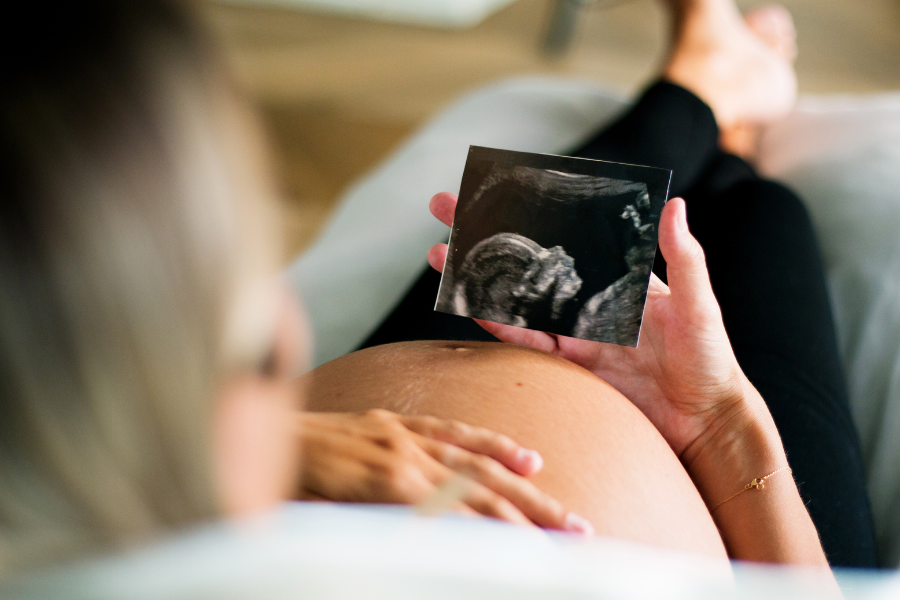 Fertility: In our experience, the fertility implications are most related to the patient’s age. This disease has an interesting natural history. Up until about age 26, patients with no other problems are able to conceive naturally. We start seeing fertility patients in the late 20’s. With treatment, the pregnancy rates remain nearly normal until the early 30’s. From age 33-35 to the late 30’s, the pregnancy rate falls to nearly zero. As age progresses from the late 20’s to the early 30’s more aggressive treatment is necessary and often requires IVF. The non-IVF treatments become much less effective after 30, while the IVF pregnancy rate stays relatively constant. After 30, non IVF pregnancy rates are 5-8% per cycle as opposed to 25-35% per cycle with IVF.
Fertility: In our experience, the fertility implications are most related to the patient’s age. This disease has an interesting natural history. Up until about age 26, patients with no other problems are able to conceive naturally. We start seeing fertility patients in the late 20’s. With treatment, the pregnancy rates remain nearly normal until the early 30’s. From age 33-35 to the late 30’s, the pregnancy rate falls to nearly zero. As age progresses from the late 20’s to the early 30’s more aggressive treatment is necessary and often requires IVF. The non-IVF treatments become much less effective after 30, while the IVF pregnancy rate stays relatively constant. After 30, non IVF pregnancy rates are 5-8% per cycle as opposed to 25-35% per cycle with IVF.
Does surgery improve fertility?
As described above, evolution of the treatment of endometriosis affected the outcome of studies and beliefs in a very adverse way. If you are comparing two groups and they are inherently the same, they will have the same fertility rates. So if surgery is incomplete, those patients will be no better off than those who didn’t get treated. It would appear that stage of disease is relatively unimportant until you get to the worst stage of disease (stages 1-4 with 4 the worst case). In the 80’s and early 90’s there were numerous studies that set out to determine the benefit of surgical treatment for mild to moderate endometriosis. Universally they showed no improvement with surgical treatment. During this time there were an excessive number of studies that looked at drug treatment for endometriosis. By the mid 90’s most researchers lost interest in clinical studies for endometriosis and the focus moved more to basic science research. There are now two excellent newer studies that have looked at “quality surgery” and future fertility with endometriosis.
One is a multi-center prospective randomized trial from Canada that showed nearly a doubling of the pregnancy rate with surgical treatment. The other a meta analysis from Italy also confirmed these results. In both instances the surgeries were not exclusively excision. It is our opinion, based on our findings of the curative effects of excision surgery, that infertility is definitely improved. We have numerous patients in the younger age group (<27 see above) who had longstanding infertility before surgery and were pregnant soon thereafter. There are too many to be coincidence alone. The most important factor is age. As age progresses, more complicated treatments are necessary. We can’t replace eggs that are gone since women are born with their entire egg complement and no new eggs are produced during their lifetime.
We feel the fertility effect of endometriosis is due to two factors: Acute inflammation (the bodies’ attempt to rid itself of endometriosis) and diminished ovarian reserve (DOR). The inflammatory response is intense and has been extensively studied with proposed negative effects including, direct toxic damage to eggs, sperm, embryos, and direct effects on follicular development and the endometrium. The endometrial effects may diminish the embryo’s ability to implant in the uterine lining. DOR is characterized by premature ovarian ageing and likely due to a decrease in egg number. We are currently engaged in a study to prove this theory. The egg loss is likely due to the long term inflammatory damage to the ovary. Therefore, surgery for endometriosis removes the inflammatory factor, which removes the acute inflammatory affect on individual cycles and it stops the process of ovarian damage, which if left alone could further reduce fertility on an ongoing basis.
Michael D. Fox, MD
Advanced Reproductive Specialists
Jacksonville Center For
Reproductive Medicine

